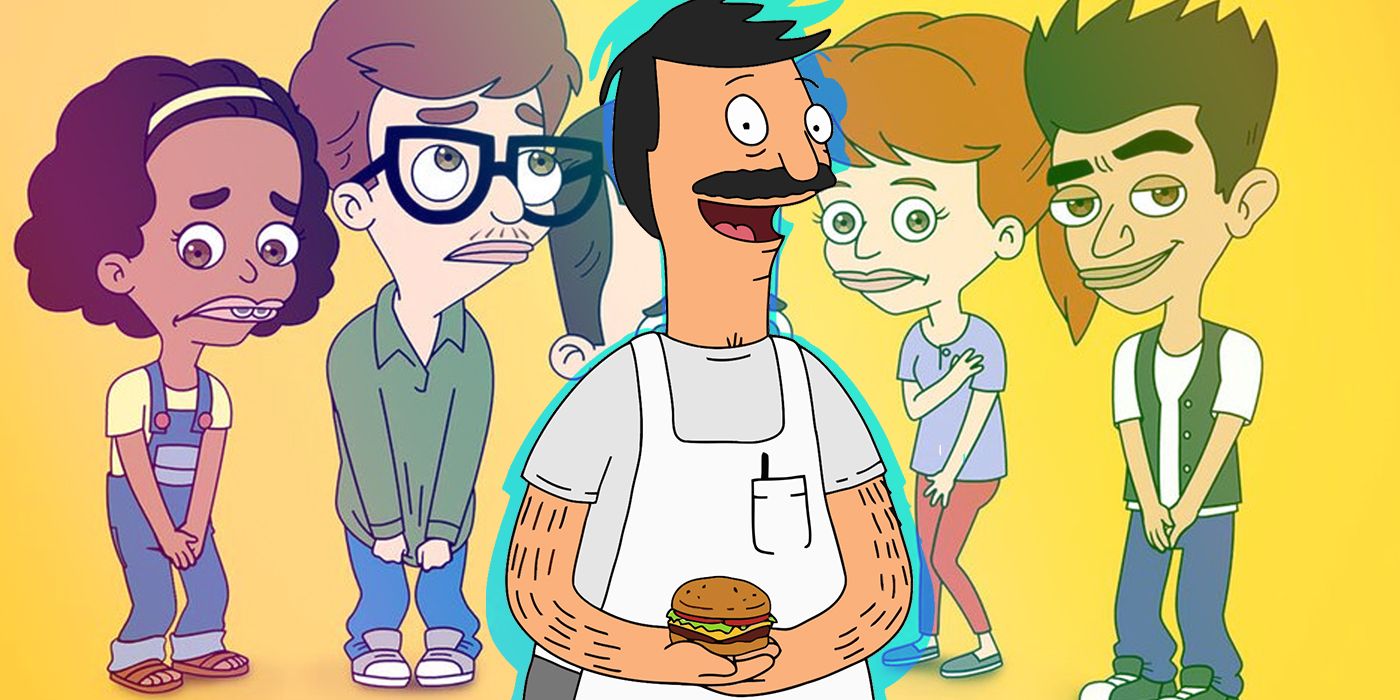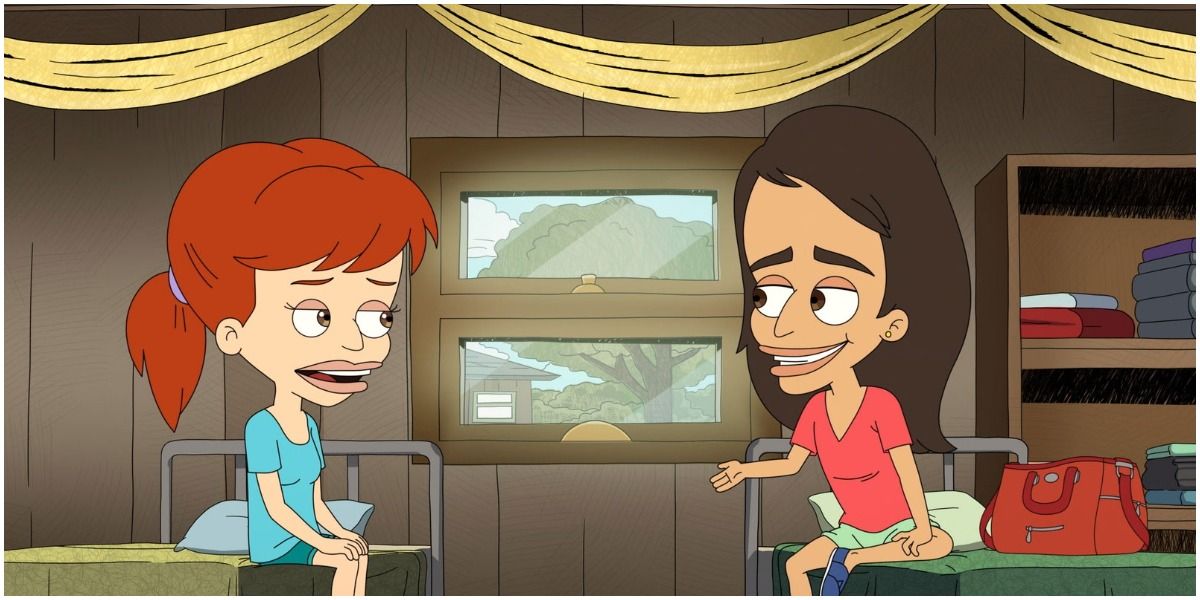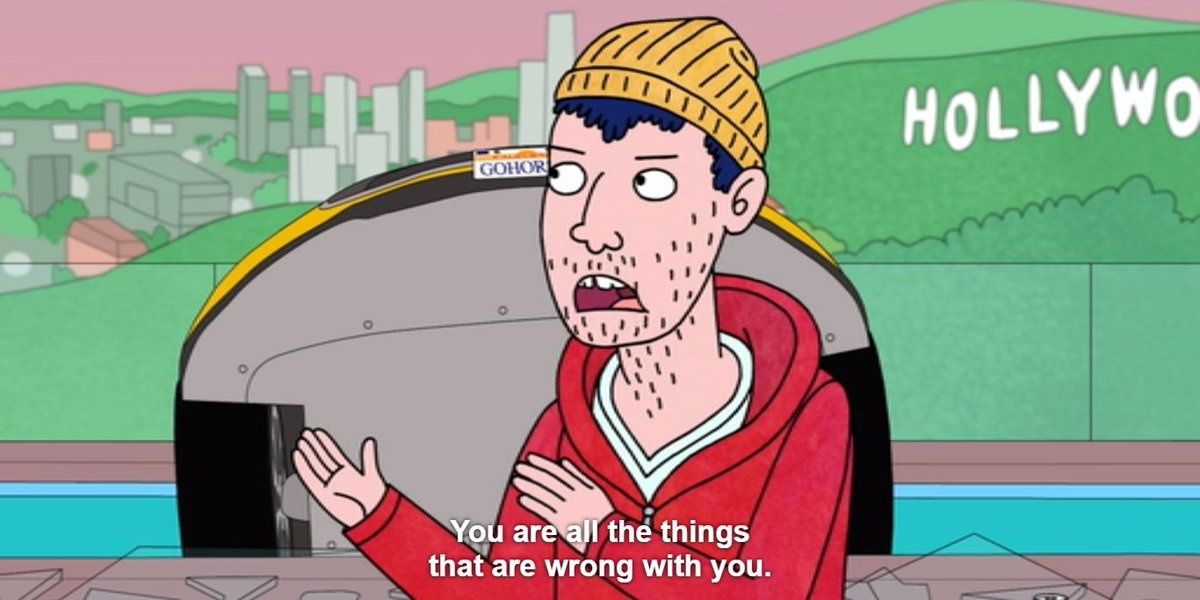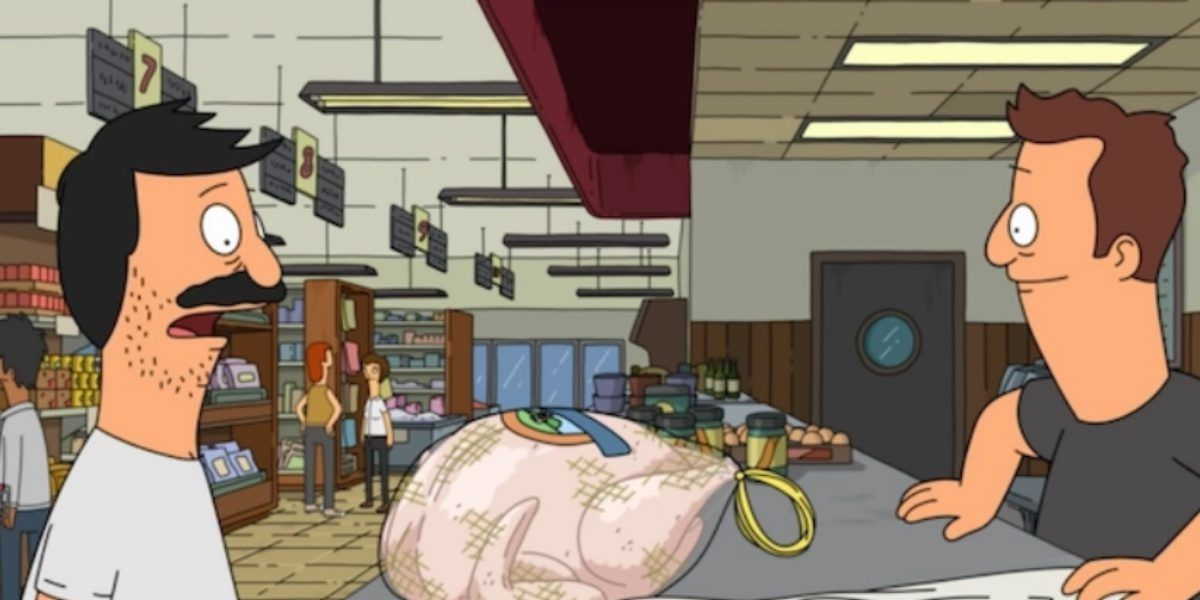While animation for younger audiences continues to push forward with positive portrayals of LGBTQ characters — best exemplified in shows like Steven Universe, She-Ra and the Princesses of Power and Kipo and the Age of the Wonderbeasts — adult animation has been one of the best platforms to address nuanced, complex issues facing the LGBTQ community. Granted, in decades past, adult animation was a refuge for fairly homophobic stereotypes and jokes, but creators working in the medium have found ways to tell compelling, nuanced stories involving queer characters.
Content for adults is often open to more mature content, yet bizarrely, even mature films for adults stumble when it comes to incorporating LGBTQ characters into a story without it becoming a niche film. However, adult animation has excelled at offering naturalistic, realistic portrayals of LGBTQ characters, ones that relay the social discomfort and banal normality to queer lives.
Using Humor to Dispel Homophobia
Historically, adult animation has perpetuated harmful homophobic stereotypes. Shows like South Park and Family Guy have long histories of homophobic and transphobic jokes. Often, these jokes come at the expense of the LGBTQ characters present, thus reinforcing negative stereotypes that homophobic audience members will then echo in their day-to-day lives.
This is different than a lot of modern adult animation, which wisely uses jokes to dispel homophobia. In these cases, the joke is at the expense of the person who is acting intolerant, not the queer character who is either targeted by harassment or treated differently. Whereas older jokes conceited that it was okay to mistreat those who are different, the opposite moral is applied here.
To cite an example, the animated series Big Mouth recently featured Natalie, a trans girl who attends a summer camp. The series features a ton of characters making insensitive and occasionally cruel comments that make Natalie feel like an outsider. However, the comedy here comes not at Natalie's expense, since the show frames her discomfort as valid, but rather by highlighting just how insensitive her peers are and how awkward the situation becomes thanks to them. The joke allows audiences to understand a viewpoint they might not otherwise be familiar with.
Of course, Big Mouth's LGBTQ representation is far from flawless. Many drew issue with Big Mouth's pansexual episode which received so much criticism from LGBTQ audiences that the creators apologized for it. However, the overall impact is that shows like Big Mouth are using comedy to deconstruct stereotypes, allowing audiences to sympathize with queer characters and feel like the other, rather than actively laugh at the other.
Dealing With LGBTQ Identity in a Mature Manner
Adult animation manages to explore the intricacies of the LGBTQ identity in a mature, grounded fashion. Several adult animated shows have that one episode where an established character either comes out or realizes that they aren't heterosexual or cisgender.
The Simpsons won a GLAAD Award back in 1997 for the episode "Homer's Phobia," which dealt with Homer reacting negatively when he learned a family friend was actually gay, leading to Homer fear that his son might also be gay. The episode ultimately uses the comedy of The Simpsons to highlight just how absurd homophobia truly is.
A very nuanced and intimate adult animation story-arc centered on LGBTQ identity comes decades later with Bojack Horseman. While "Homer's Phobia" dealt with other people fearing a character was gay, Seasons 3 through 5 of Bojack Horseman centered around the character Todd gradually realizing he was asexual while trying to engage in romantic relationships. Todd's arc offers a very intimate, mature portrait of a character coming to terms with identity later in life. Unlike the portrayal of homosexuality in "Homer's Phobia," it is done from the queer character's perspective.
Normalizing LGBTQ Identities
What adult animation has managed to do incredibly well is to demonstrate the sheer normalcy of being LGBTQ. Shows deal with adult situations, which can often be routine and mundane in nature. Adult animation manages to incorporate these moments through a queer narrative.
No show has done this better in recent memory than Bob's Burgers. While some might point to the trans sex worker Marshmallow as a great example of an LGBTQ character casually inserted into a story, the best example is the titular man himself, Bob. Bob's bisexuality is brought up when relevant to the plot, but he is canonically attracted to members of the same and differing gender.
This is most apparent in the episode "Turkey in a Can," where Bob flirts with a butcher he finds attractive, leading to a series of flirtatious conversations that are genuinely wholesome explorations of both Bob's insecurities (he feels he's out of the butcher's league) and an attempt to normalize bisexual life. What shows like Bob's Burgers accomplish is the normalization of sexuality and gender identity. The approach succeeds because at no point is Bob framed in-show as "the other." It simply shows his attraction without making it the focal point.




